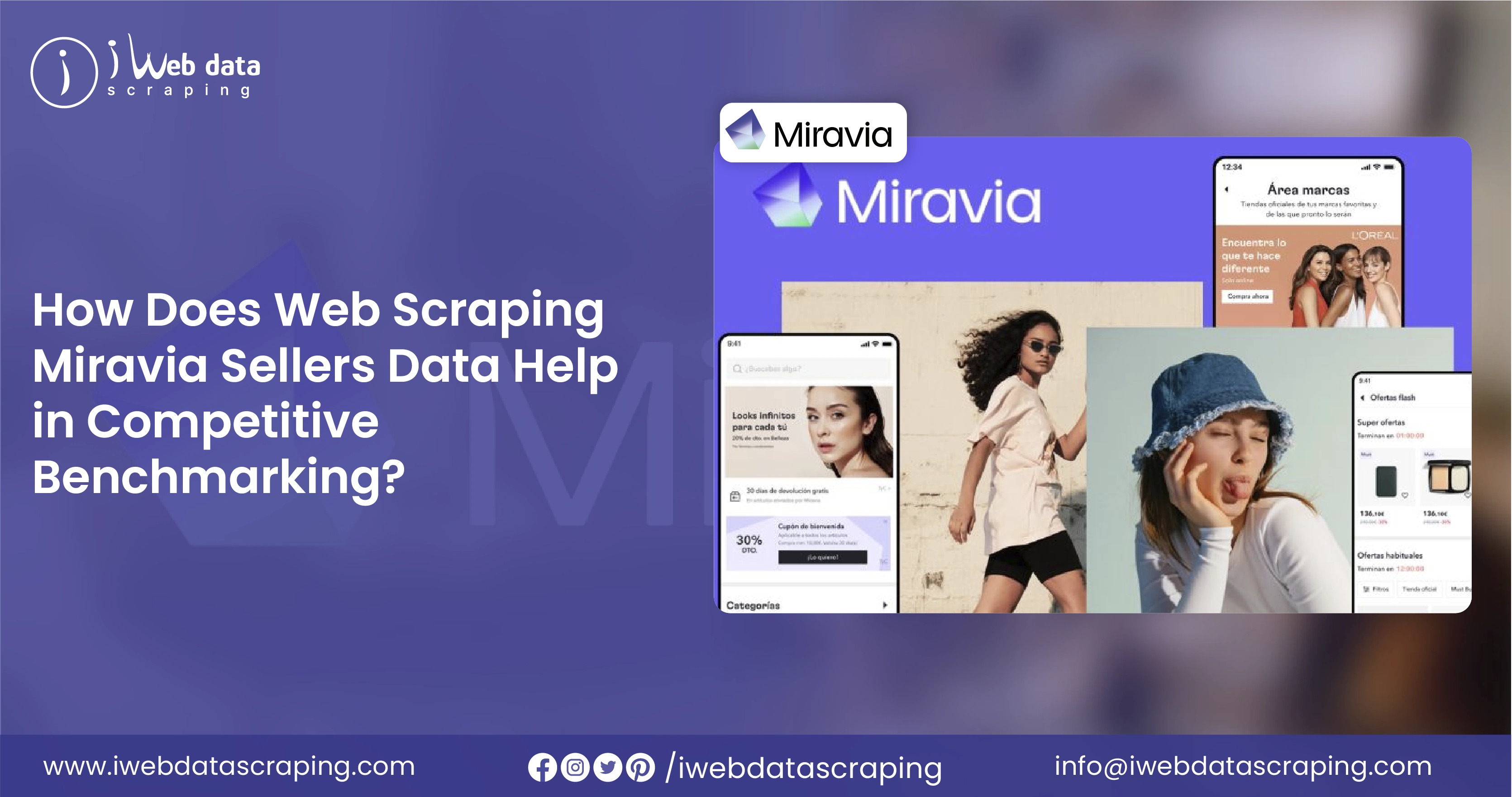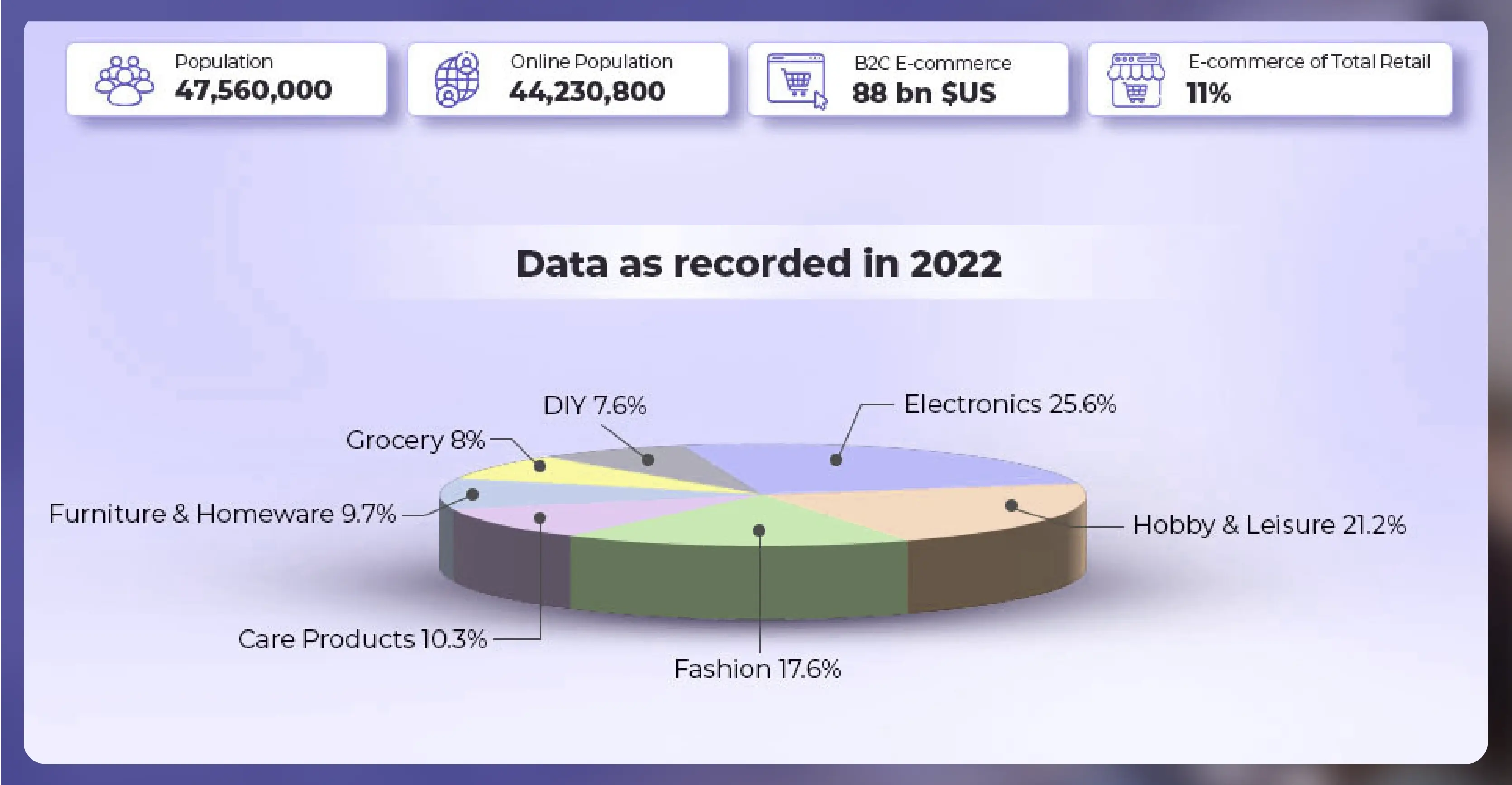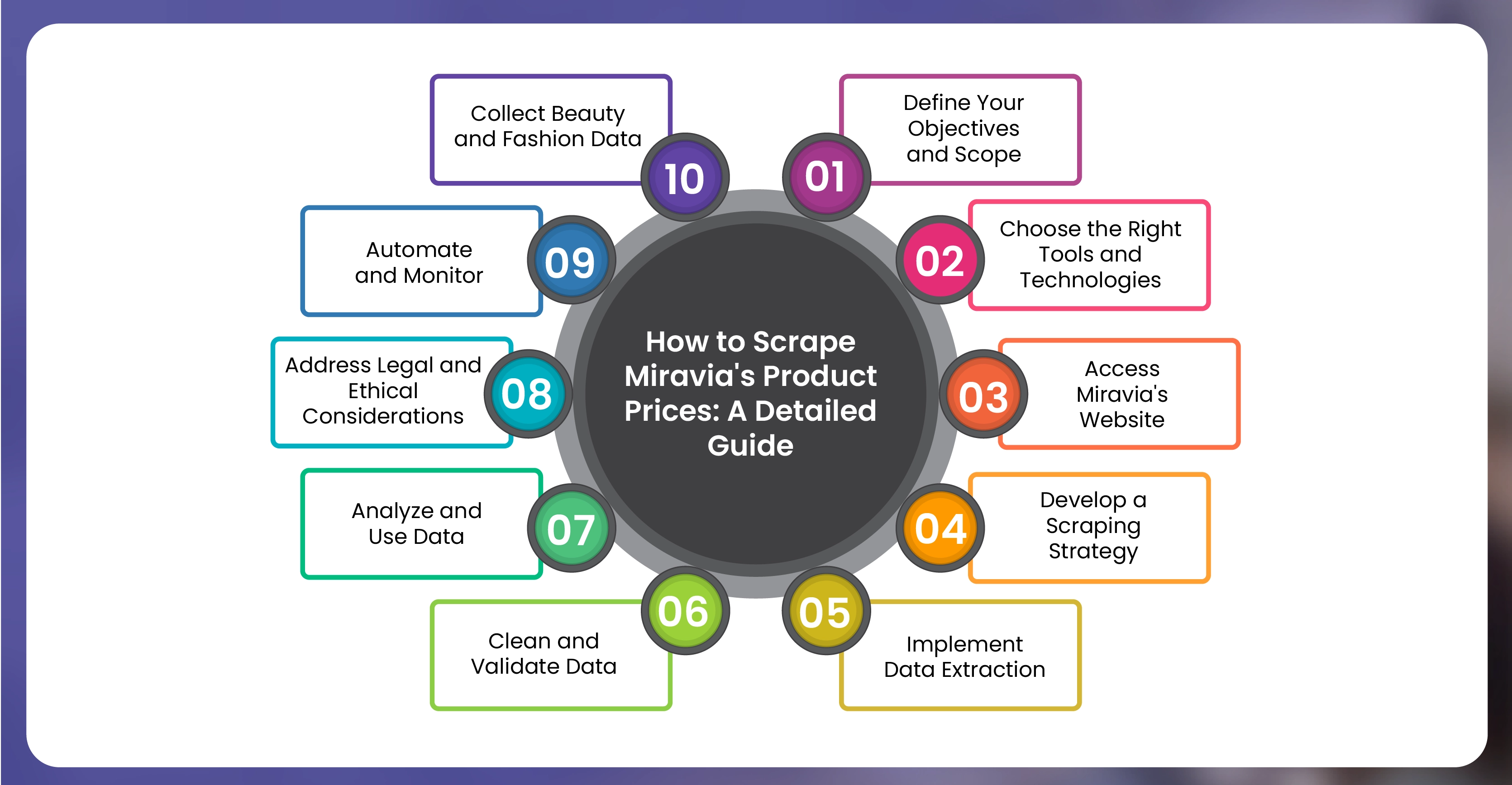

In the fast-paced world of e-commerce, staying ahead of competitors and understanding market trends is crucial for success. One effective way to gain valuable insights is to scrape eCommerce product data from various online platforms. Businesses can gather comprehensive data on product listings, prices, and availability by leveraging web scraping techniques, helping them make informed decisions and strategize effectively.
Web scraping Miravia sellers' data is a prime example of how targeted data extraction can benefit e-commerce strategies. Miravia, a notable e-commerce platform, hosts a wide range of sellers and products, making it a rich source of valuable data. By using tools to web scrape product data from Miravia, businesses can access detailed information on pricing, product specifications, and customer reviews. This data is crucial for analyzing market trends, optimizing pricing strategies, and understanding competitive dynamics.
Web scraping for online retail sites enables businesses to update their product listings, monitor competitor activity, and enhance their own offerings based on real-time market insights. Incorporating these practices into your business strategy can lead to more informed decision-making, better inventory management, and a more decisive competitive edge in the ever-evolving e-commerce landscape.

Web scraping Miravia sellers' data gives retailers critical insights into market trends, competitor pricing, and inventory levels. This data helps optimize stock management, adjust pricing strategies, and enhance product offerings, leading to improved decision-making and a stronger competitive position in the retail market.
Identify Popular Products: By leveraging web scraping Miravia seller's data, retailers can pinpoint which products are trending based on sales volume and customer feedback. This insight allows retailers to align their inventory with prevailing market demand.
Track Pricing Trends: Scraping data from Miravia provides insights into pricing trends and market fluctuations. Retailers can use Miravia's e-commerce seller data extraction to monitor how prices vary and adjust their pricing strategies to remain competitive.
Benchmark Against Competitors: E-commerce data scraping services enable retailers to compare their product offerings, prices, and promotions with those of their competitors on Miravia. This comparative analysis helps identify gaps and improvement opportunities in their strategies.
Analyze Competitor Strategies: Insights into competitors' promotional activities and discount patterns, gathered through Miravia product datasets, can inform retailers' marketing and sales strategies, allowing them to craft more effective campaigns and offers.
Optimize Stock Levels: Scraping data helps retailers monitor product availability and turnover on Miravia. This information is crucial for effective inventory management, preventing overstocking and stockouts.
Forecast Demand: By analyzing historical sales data and product performance through eCommerce and retail data collection services, retailers can more accurately forecast future demand and plan their inventory accordingly.
Dynamic Pricing Strategies: Ecommerce product data scraper tools provide insights into competitors' pricing, enabling retailers to implement dynamic pricing strategies that respond to market conditions and competitive pressures.
Promotional Planning: Understanding competitors' discounting patterns through data collection of Miravia BestSeller products can help retailers develop effective pricing and promotional strategies to attract and retain customers.
Identify Product Gaps: The product listings data extractor offers valuable information on popular products and customer reviews, helping retailers identify gaps in their product offerings and opportunities for new product development.
Enhance Product Features: Insights gained from supermarket price data scraping on customer feedback and product ratings on Miravia guide retailers in improving their products to better meet consumer needs and preferences.
Understand Consumer Preferences: Analyzing customer reviews and ratings from Miravia helps retailers understand consumer preferences and tailor their product offerings to meet these expectations.
Improve Customer Experience: Feedback and common issues highlighted in Miravia reviews can guide retailers in improving their customer service and product quality.
Monitor Price Adjustments: Regularly scraping Miravia data allows retailers to track how competitors adjust their prices in response to market changes. This helps in making timely pricing adjustments to maintain competitiveness.
Evaluate Price Elasticity: Miravia Product Seller Data Collection Service can help retailers understand price elasticity by analyzing how price changes impact sales, enabling more informed pricing decisions.
Informed Decision-Making: Comprehensive data collected supports strategic planning by providing insights into market dynamics, competitive activities, and consumer behavior.
Market Entry Strategy: For retailers planning to enter new markets or expand product lines, Miravia Seller Scraper offers valuable insights into market potential and the competitive landscape, aiding in the development of a successful market entry strategy.
Targeted Marketing Campaigns: Data helps retailers design targeted marketing campaigns that resonate with consumer preferences and trends.
Sales Forecasting: Analyzing sales trends and product performance helps in accurate sales forecasting, setting realistic sales targets, and effectively allocating resources.
Optimize Product Descriptions: By studying successful product listings on Miravia, retailers can improve their product descriptions and images to increase visibility and appeal in search results.
Update Product Features: Insights from top-selling products and customer reviews guide retailers in highlighting critical attributes in their product listings, aligning with what customers find most appealing.
In summary, web scraping offers retailers a wealth of information that can be leveraged for strategic advantages. From optimizing inventory and pricing to understanding consumer preferences and enhancing product development, this data is crucial in driving informed decision-making and maintaining a competitive edge in the e-commerce sector. It ensures that retailers can stay ahead in the ever-evolving market.

Scraping product prices from Miravia involves a series of steps to collect accurate and relevant data. Here's a comprehensive guide to help you scrape Miravia's product prices effectively:
Identify Data Requirements: Determine which product prices and details you need. This could include categories like electronics, beauty, fashion, etc.
Set Clear Goals: Define what you want to achieve with the data, such as price comparison, trend analysis, or competitive benchmarking.
Select a Web Scraping Tool: Choose a tool or programming language for web scraping. Popular options include Python libraries like BeautifulSoup, Scrapy, or Selenium.
Consider APIs: If available, use Miravia Product Data API scraping for structured and reliable data extraction. APIs often provide a more straightforward method than scraping HTML.
Inspect the Website Structure: Use browser developer tools to examine the website's HTML structure. Identify the HTML tags and classes that contain the product prices.
Check for JavaScript Rendering: Some websites load data dynamically using JavaScript. Ensure your scraping tool can handle JavaScript if necessary.
Write a Scraper: Develop a script to web scrape Miravia eCommerce product data. This script should navigate the website, locate product price elements, and extract the required data.
Handle Pagination: If product listings span multiple pages, implement logic to handle pagination and scrape data from all relevant pages.
Extract Miravia Product Data: Use your scraper to extract Miravia product data, including prices, product names, and other relevant details. Ensure that your script captures data accurately and handles exceptions.
Data Storage: Store the extracted data in a structured format, such as CSV, JSON, or a database, for further analysis.
Data Cleaning: Review the collected data for consistency and accuracy. Remove duplicates, handle missing values, and correct any discrepancies.
Data Validation: Verify that the extracted prices match the website's current prices to ensure the data is up-to-date and reliable.
Analyze Prices: Use the collected data to perform price comparisons, market analysis, or competitive analysis. Identify trends and insights relevant to your objectives.
Integrate Data: If needed, integrate the data with other business systems or tools for enhanced decision-making.
Compliance: Ensure that your scraping activities comply with Miravia's terms of service and data protection regulations. Avoid excessive scraping that might affect the website's performance.
Respect Robots.txt: Check the website's robots.txt file to understand which parts of the site are allowed or disallowed for scraping.
Automation: If you need to collect data regularly, set up automated scraping schedules. Use cron jobs or scheduling tools to run your scraper at defined intervals.
Monitor and Maintain: Regularly monitor the scraper for any issues or changes in the website's structure. Update your scraper as needed to adapt to changes.
Target Specific Categories: If your focus is on beauty and fashion, adjust your scraping script to target these categories specifically. Extract relevant product details like prices, reviews, and specifications.
Analyze Trends: Use the data to track trends in beauty and fashion products, understand pricing strategies, and make informed business decisions.
Conclusion: Miravia beauty and fashion product data scraping is a powerful tool for gaining insights into market trends, pricing, and consumer preferences. By leveraging the web scraping of Miravia sellers, businesses can collect beauty and fashion data efficiently, enabling them to make informed decisions and stay competitive. This data helps optimize inventory, refine pricing strategies, and tailor marketing efforts to meet customer needs. With accurate and timely information, retailers can enhance their product offerings and improve their market positioning, ensuring a strategic advantage in the dynamic beauty and fashion sectors.
Discover unparalleled web scraping service or mobile app data scraping offered by iWeb Data Scraping. Our expert team specializes in diverse data sets, including retail store locations data scraping and more. Reach out to us today to explore how we can tailor our services to meet your project requirements, ensuring optimal efficiency and reliability for your data needs.